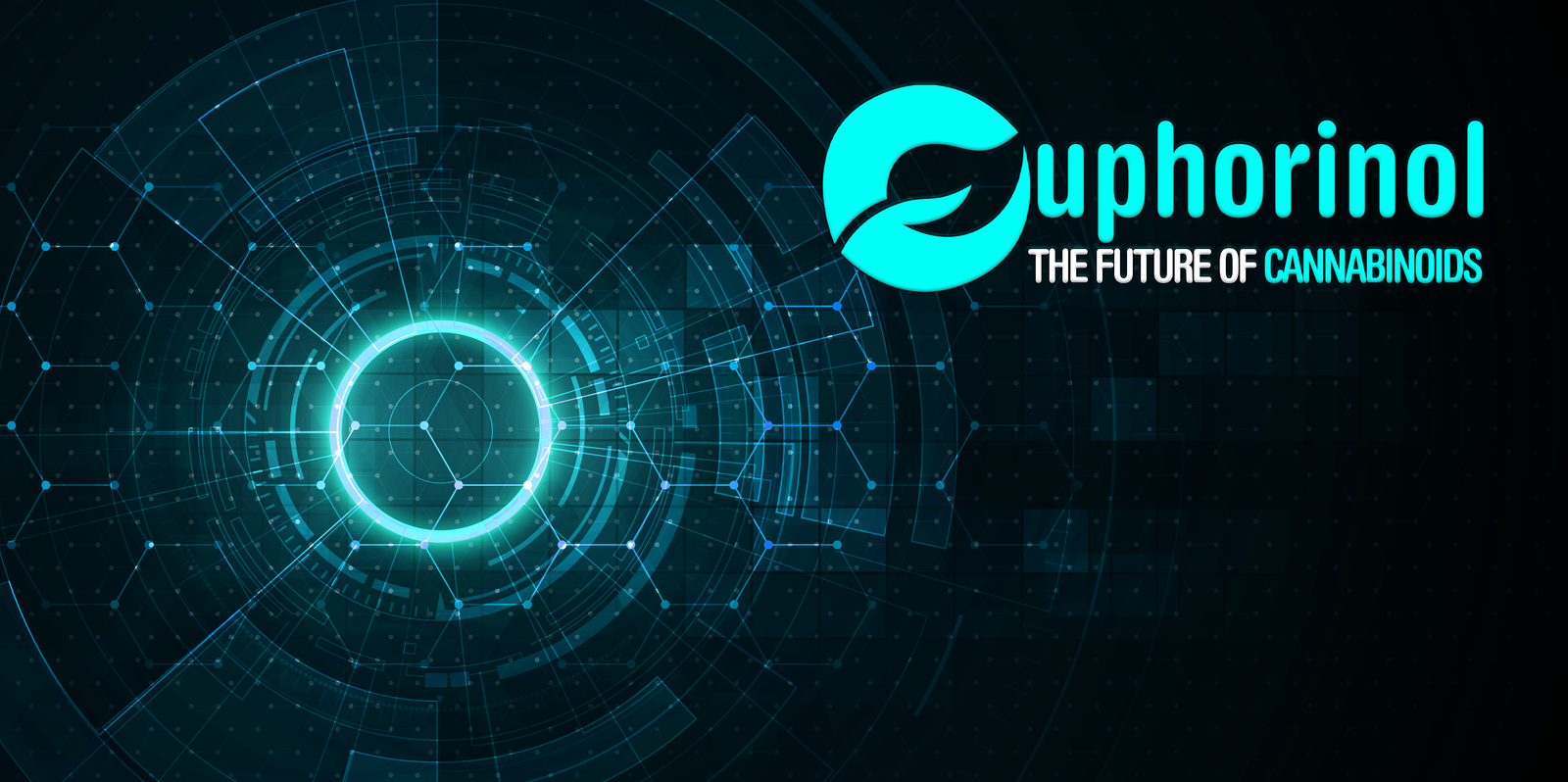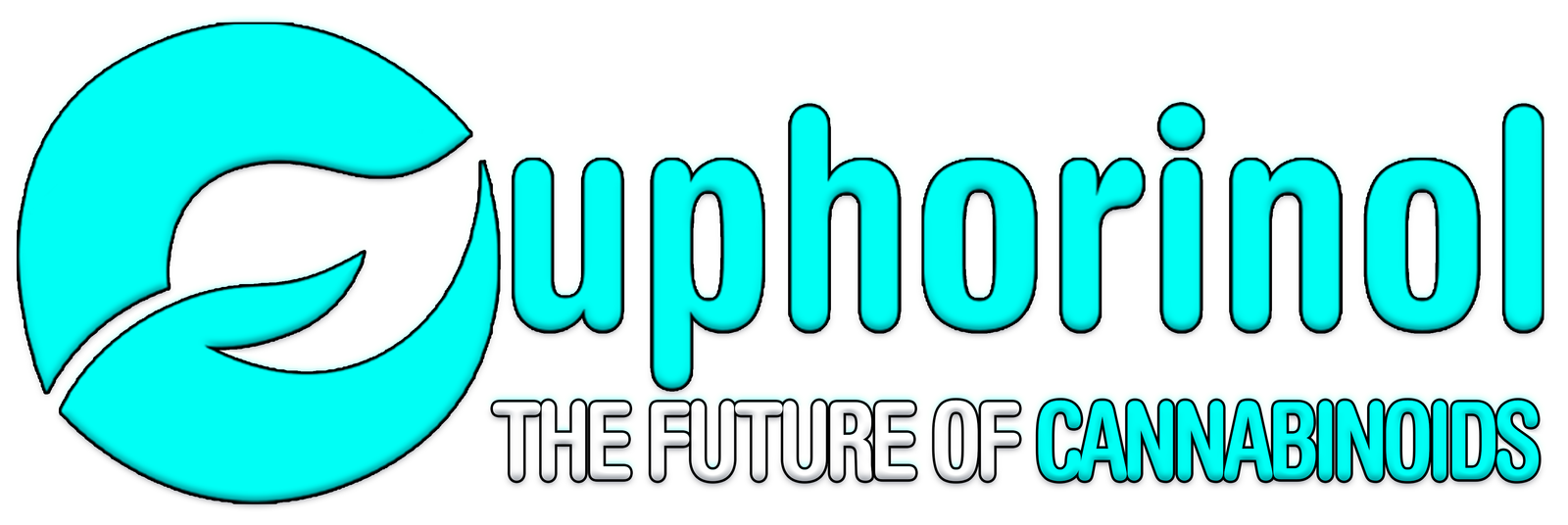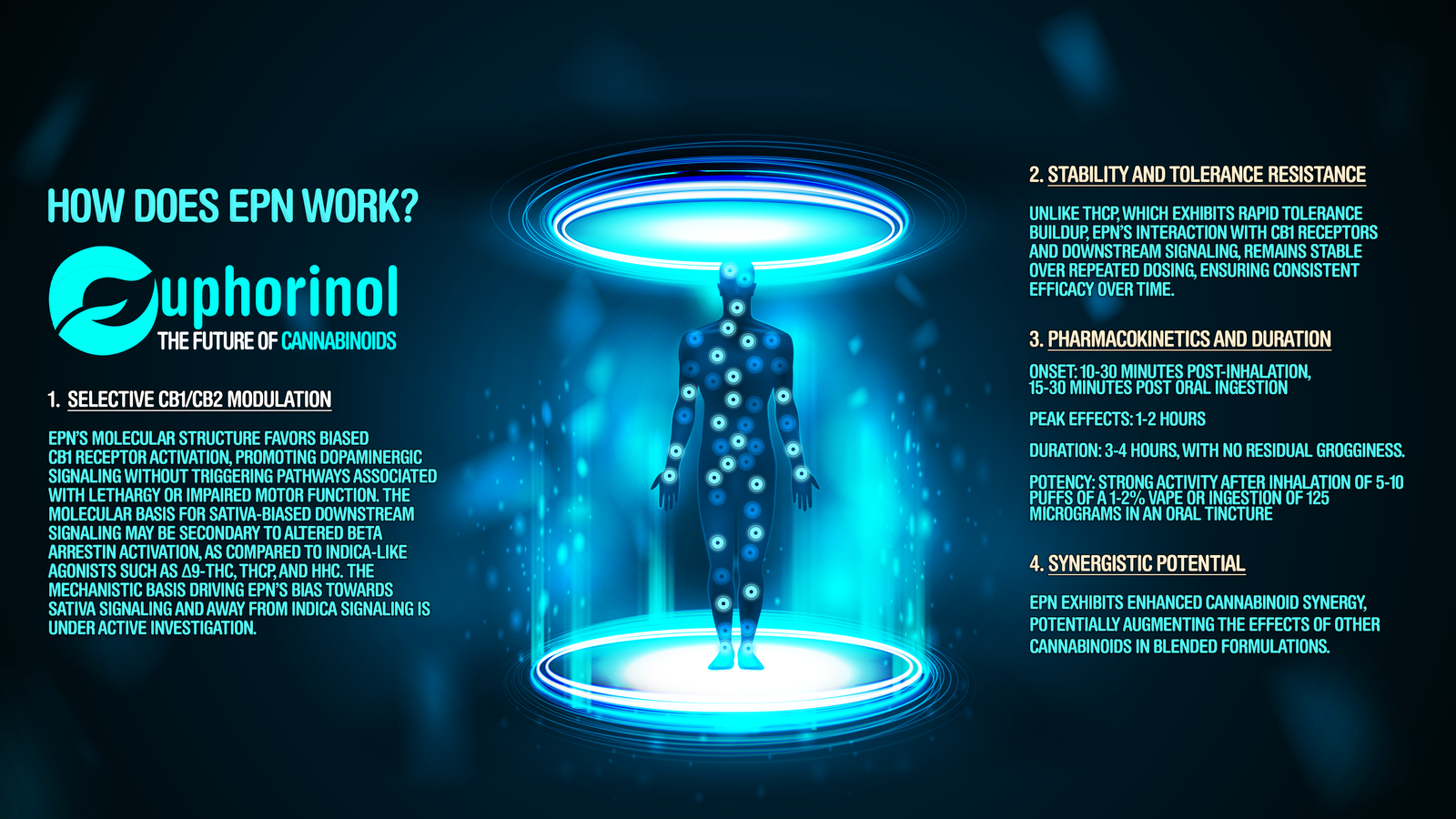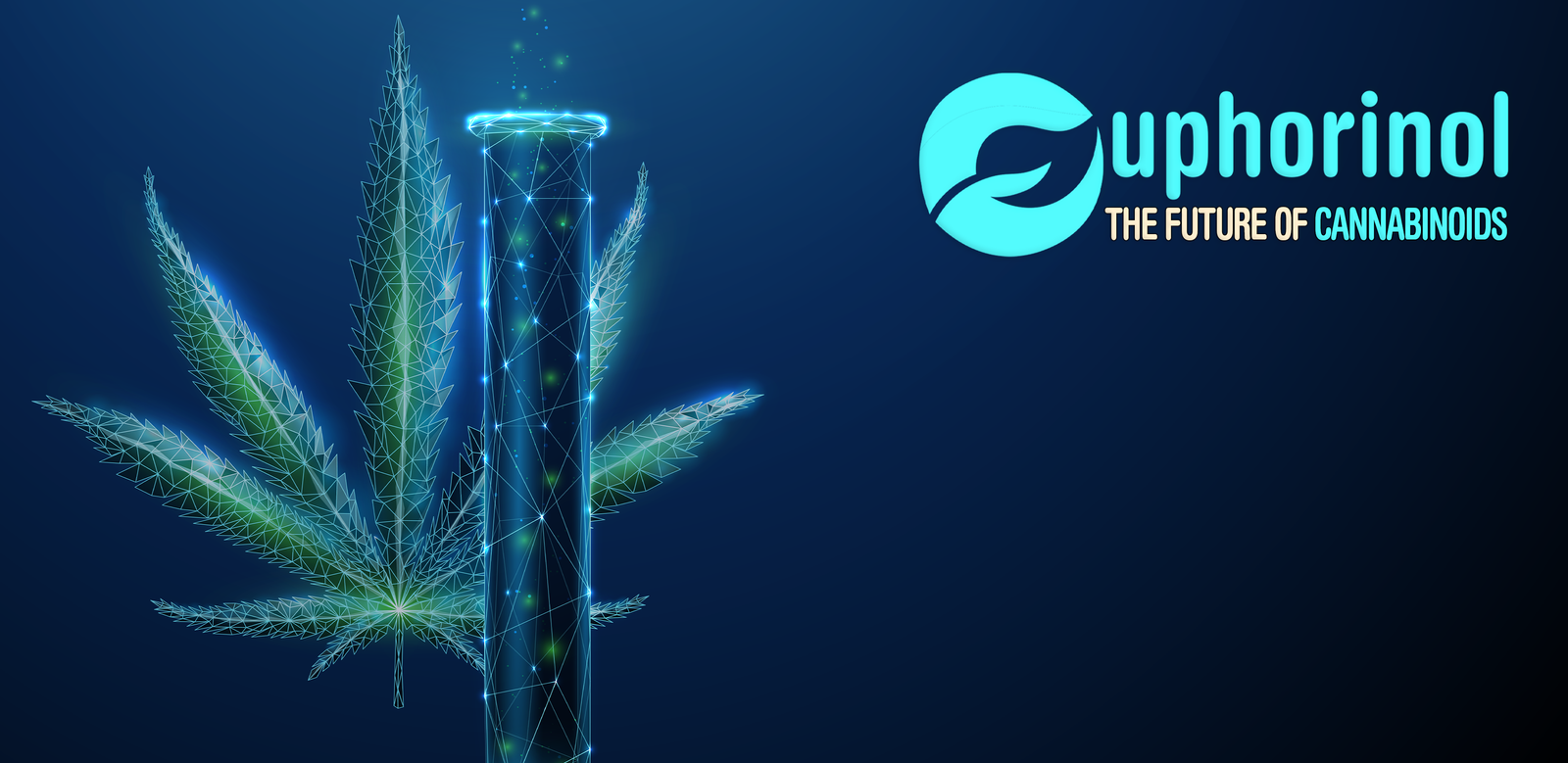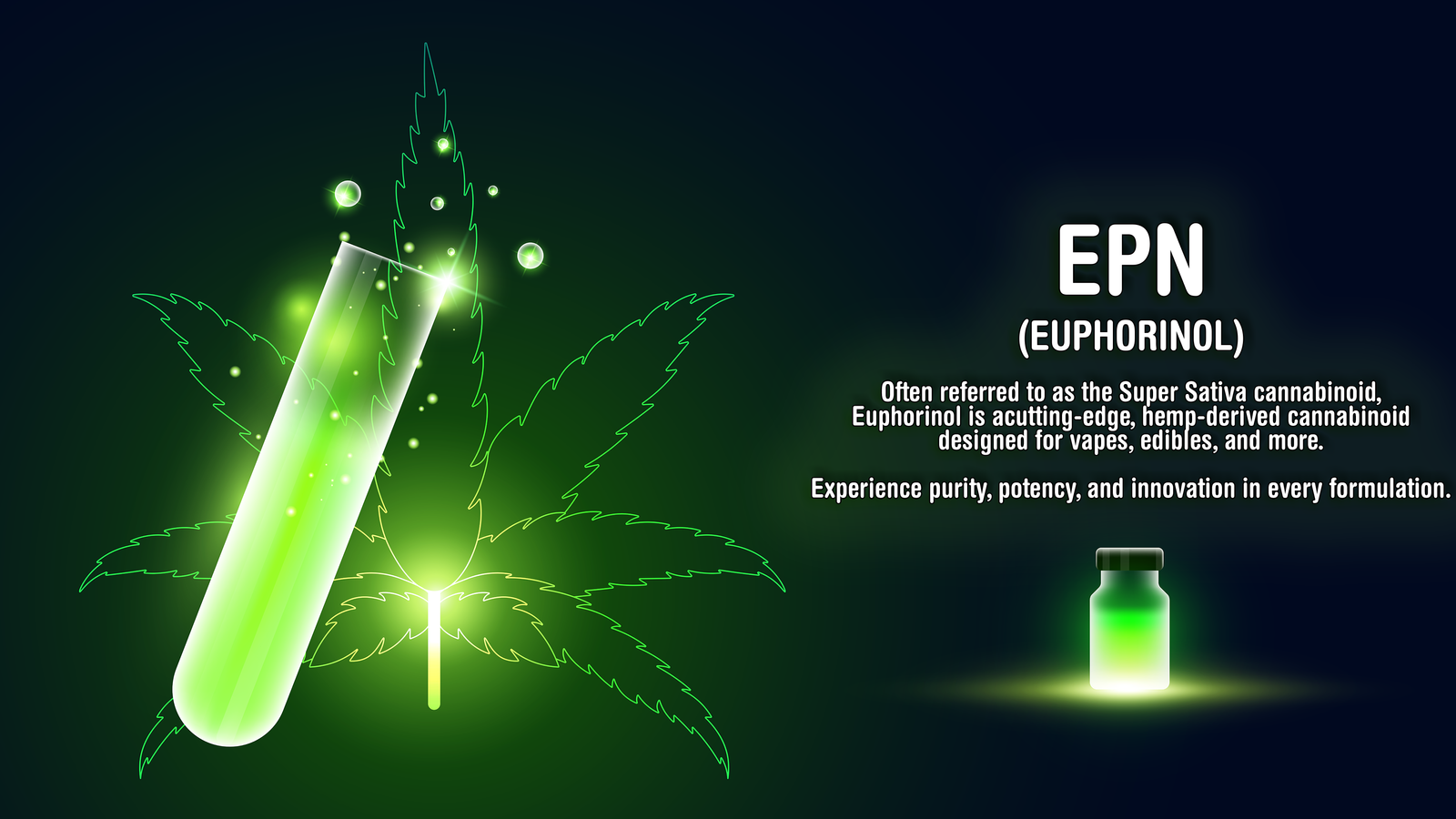Activation of the human CB1 receptor triggers downstream signaling within the neuron that
can involve several distinct biological pathways. Two pathways are well described: one
involving beta arrestin, the other notable for cyclic AMP formation by adenylate cyclase.
The endogenous stimulant for CBR1 is anandamide, which activates dopamine release in
reward centers in the mesolimbic cortical pathways. This is mediated by CBR1 suppression
of GABA production. Thus, cannabis-induced happiness or euphoria is a consequence of
this CBR1-mediated process.
A fascinating aspect of this story is that CBR1 can change its shape (“conformation”) so
that it is biased towards triggering only one of these two signaling pathways that are
downstream of the receptor. Or it can be activated into a hybrid conformation whereby
both pathways are simultaneously and equally activated, resulting in a balanced response.
Therefore, the manipulation of these two pathways and the selective bias to one or the
other is profoundly interesting from the pharmacologic point of view.
In lay terms, the activation of the Sativa happiness or reward pathway is not intrinsically
related to being “stoned.” That feeling, of lethargy, psychomotor depression, and altered
consciousness results from triggering of a parallel pathway also stimulated upstream by
CBR1 activation. Therefore, in theory, it is possible to be stoned without euphoria or to be
euphoric without being stoned. These are separate physiological responses that are both
triggered by activation of the same CBR1 receptor.
We now know of certain compounds (eg anandamide or EPN) that appear to be activating
the euphoric dopamine-driven reward pathway. The nomenclature of “Sativa” has arisen to
denote activation of this pathway.
Alternatively, activation of CBR1 may trigger the depressed level of consciousness
pathway, which is colloquially denoted as “stoned” or “Indica”. There are many agents,
such as THCP, that favor the Indica response.
There are also agents, in particular d9 THC, that produce a hybrid response. Whereby both
pathways are equally stimulated.
Cannabis the plant is biased towards Indica signaling. Even in those plants that are
characterized as “Sativa,” there is still sufficient Indica signaling such that the experience is
not truly a pure Sativa one.
Most users of hash, cannabis, HHC, or THCP are not aware that one can become high yet
not stoned. That is, euphoric and energized, focused, and alert. This is because these users
have never experienced the effect of an agent that is profoundly biased towards Sativa. For
those individuals who wish to have a euphoric effect without any concomitant “stoned”
response, EPN will offer a remarkable “journey”.
Because cannabis, the plant strongly activates the Indica pathway, producing “stoned”
individuals, its users have historically found themselves in a somewhat marginalized
subculture and called “potheads” or other derogatory names. Indeed, the act of becoming
euphoric from cannabis has been so intrinsically linked to being “stoned” that there is no
separation of the effects in common parlance. The social stigma of cannabis is thus a
byproduct of the predominance of the Indica signaling pathway.
The emergence of EPN has the potential to reverse this social stigma. And thus, to offer the
euphoric “Sativa” signaling pharmacology to a demographic that has no interest
whatsoever in the classic cannabis subculture. Accordingly, we view EPN as offering a new
opportunity to more mainstream elements in society.
